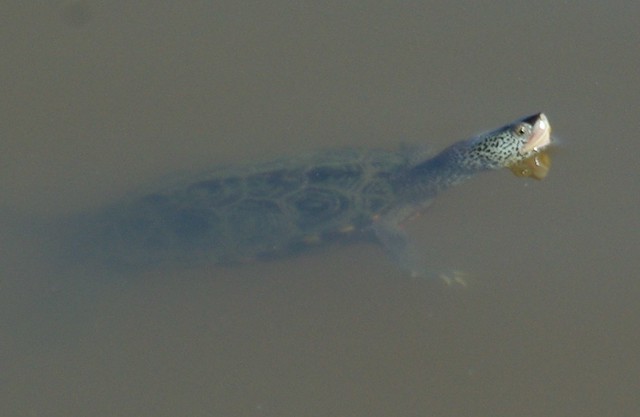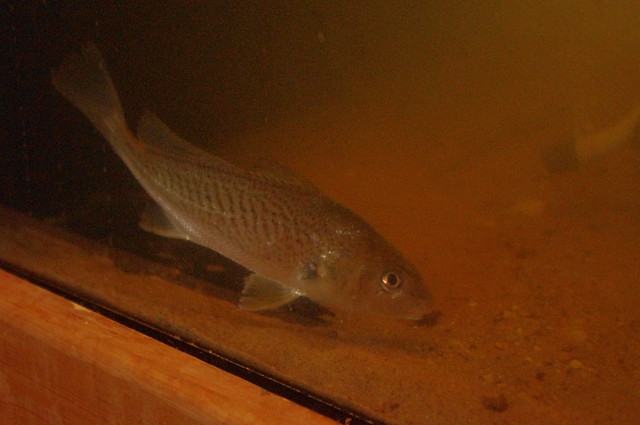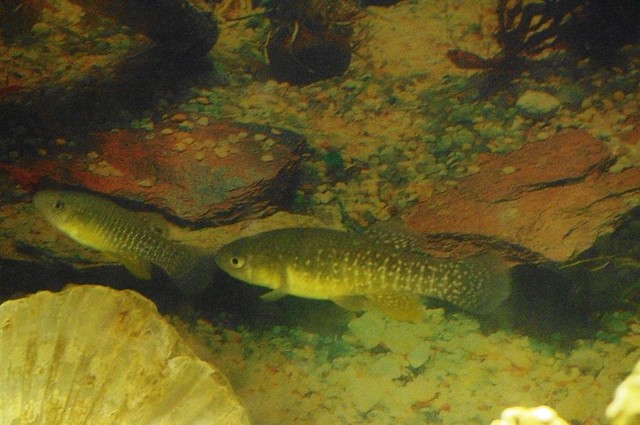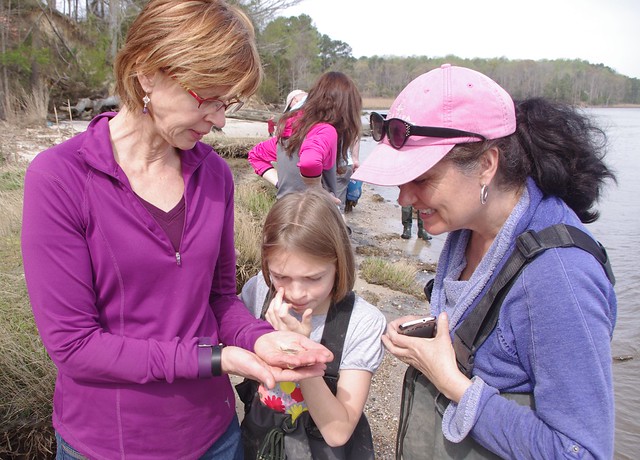Read Our Blogs
Meet the Marsh: Creatures and Critters
A park guest asked me, "what wildlife will I see at the park today?" There are never any guarantees of what animals, crustaceans, or fish will be found in a marsh ecosystem on a given day. However, finding interesting creatures and critters with a little luck, quiet footsteps, and plenty of patience is possible.

Muskrats can be found in estuarine and freshwater marshes.
Muskrats make their home in the marsh making their domed lodges out of cordgrass and eating the tender shoots. They resemble small beavers, as they are both in the rodent family. However, the muskrat is much smaller and cannot cut down trees. River otters are unrelated. Like those mentioned before, they have a layer of oil where the fur meets the skin. This oil keeps the otter warm enough to swim in ice-cold water. Raccoons hunt for food in the marsh. Many people think that they wash their hands before eating. The truth is raccoons do not have saliva glands. They dip their food in the water to add moisture for chewing and digestion. White-tailed deer find seclusion along the edge of the marsh and make trails across the wetland.

It's a rare treat to find a diamondback terrapin.
Northern water snakes live along Taskinas Creek and the river marshes. Even though they are non-venomous, they will bite if threatened. Eastern rat snakes are another harmless species found at the edge of the wetland. A careful eye may reveal a southeastern mud turtle. Snapping turtles are easily seen due to their size. A special and infrequent find is the northern diamondback terrapin. They were once prized for their meat. Their numbers continue to decline due to propeller strikes and small males drowning in crab pots.

Red jointed fiddler crabs are easy to find at low tide.
On the way to Fossil Beach, you notice a big claw of some sort in the mud along the footbridge. No sooner do you try to reach for it, and it hides in the nearest hole. This is the red jointed fiddler crab and the males have a large claw to attract females. Along the sandy fringe marshes, the square-shaped marsh crab is more common. Neither of these crustaceans grows as big as the blue crab that is a favorite of seafood lovers. Marsh periwinkle snails do not survive long underwater. They are found on the cordgrass leaves out of harm's way on a high tide and on the mud or sand at low tide. When periwinkles move up and down the grass blades, they remove excess salt. Removing the salt makes the plants healthier, allowing for more photosynthesis and root growth. The healthier the grasses are, the more they can filter out silt and pollutants from going into the waters. If you see these shells anywhere, please leave them be so that the snails can keep doing their important work.

Croaker, Virginia is named for the Atlantic croaker.
Estuarine marshes have brackish water streams. The amount of salt and fresh water varies according to how close or far away the water source is, if the tide is incoming or outgoing, and how much rainfall has been in the area. In times of heavy rain with an outgoing tide, freshwater species sometimes venture far from the stream's source. During a drought, a high tide can allow saltwater fish to take them into freshwater marshes. Anglers who fish in such creeks are likely to catch just about anything from channel catfish and white perch to Atlantic croaker and red drum.

Mummichog and other killifish swim in any creek or river.
Most of the "minnows" that swim in the marshes are in the killifish family, named for the Dutch word for "little fish." The banded killifish prefers more freshwater while a striped killie tolerates higher salinity. Mummichog, from a Native American word for "swims in crowds," inhabits any range of water. In winter, they bury themselves in soft mud, giving them the name "mud minnow." Spring and summer visitors to the marsh waters include Atlantic silversides, bay anchovies and various juvenile saltwater species.

Join us for marsh discoveries and memories.
Viewing and exploring estuarine marshes is a great way to discover nature. Come to York River State Park and experience it for yourself with one of our interpretive programs:
Dabble in Discovery or Roaming Ranger – Meet with our stationed naturalist/ranger who will help you discover the aquatic, insect, mammal, and plant life in the park’s ecosystems.
Stream to Sea Stroll – Take a walk and discover life in four different aquatic ecosystems.
In addition, we have a ranger on staff who is available to lead group programs during the week. Please call 757-566-3036, or email yorkriver@dcr.virginia.gov for more information.
Directions to York River State Park: From I-64, take the Croaker Exit 231B. Go north on Route 607 (Croaker Rd.) for one mile, then right on Route 606 (Riverview Rd.) about one and a half miles to the park entrance. Take a left turn into the park.
York River State Park is located at 9801 York River Park Road, Williamsburg, Va. 23188.
Latitude, 37.405520. Longitude, -76.714323. Please click here for a Google map.
This is the third in a series of articles on the marshes at York River State Park. The first installment is Meet the Marsh: Definition & Types, the second is Meet the Marsh: Grass & Sky.
If you have read the article and have a question, please email nancy.heltman@dcr.virginia.gov.
Search for blogs
By Park
Categories
Cabins
Camping
Fishing
History and Culture
Other
Programs and Events
Trails
Volunteers
Water Fun
Archive
2025
2024
2023
2022
2021
2020
2019
2018
2017
2016
2015
2014
2012













